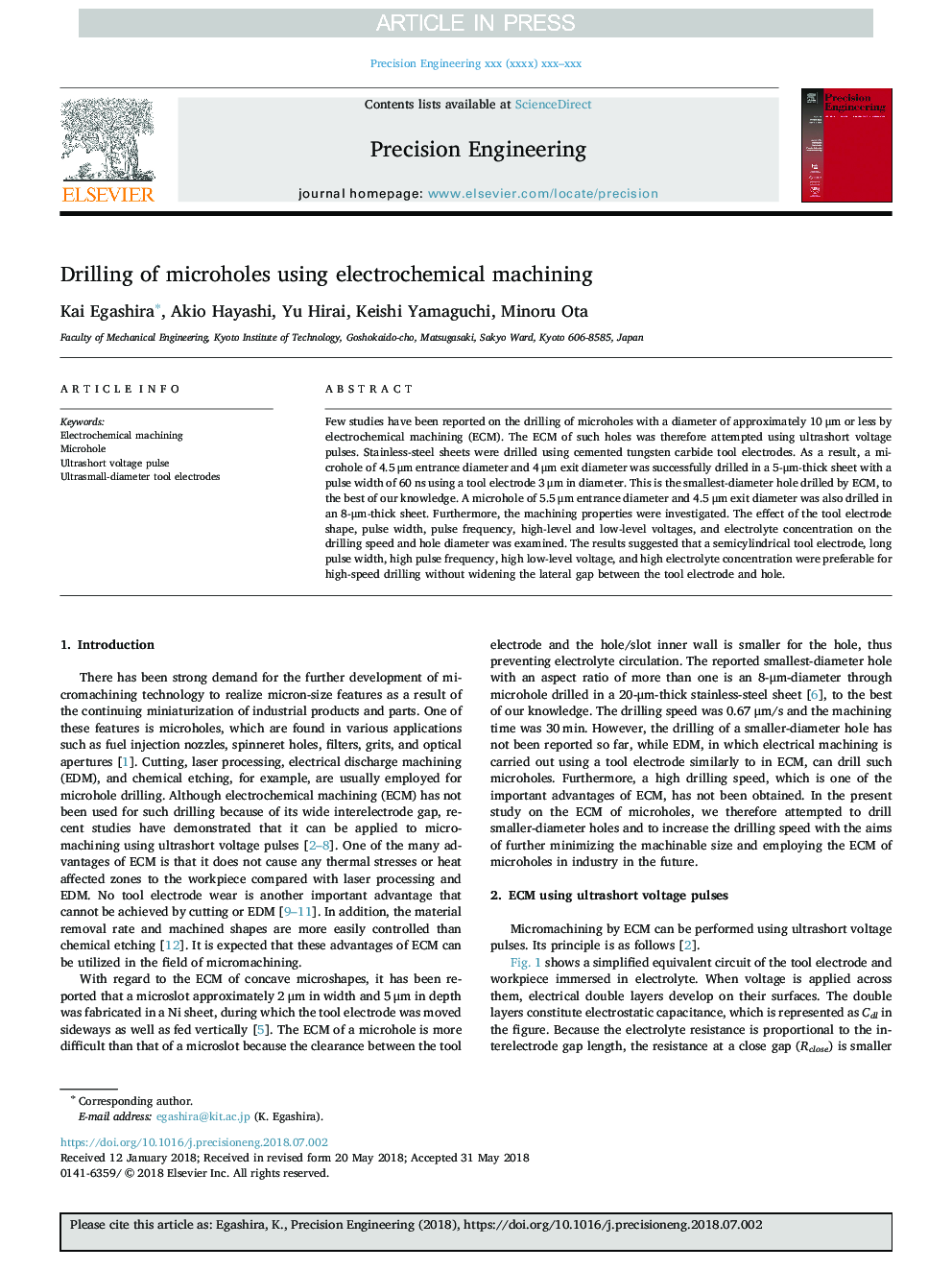| Article ID | Journal | Published Year | Pages | File Type |
|---|---|---|---|---|
| 10226522 | Precision Engineering | 2018 | 6 Pages |
Abstract
Few studies have been reported on the drilling of microholes with a diameter of approximately 10â¯Î¼m or less by electrochemical machining (ECM). The ECM of such holes was therefore attempted using ultrashort voltage pulses. Stainless-steel sheets were drilled using cemented tungsten carbide tool electrodes. As a result, a microhole of 4.5â¯Î¼m entrance diameter and 4â¯Î¼m exit diameter was successfully drilled in a 5-μm-thick sheet with a pulse width of 60 ns using a tool electrode 3â¯Î¼m in diameter. This is the smallest-diameter hole drilled by ECM, to the best of our knowledge. A microhole of 5.5â¯Î¼m entrance diameter and 4.5â¯Î¼m exit diameter was also drilled in an 8-μm-thick sheet. Furthermore, the machining properties were investigated. The effect of the tool electrode shape, pulse width, pulse frequency, high-level and low-level voltages, and electrolyte concentration on the drilling speed and hole diameter was examined. The results suggested that a semicylindrical tool electrode, long pulse width, high pulse frequency, high low-level voltage, and high electrolyte concentration were preferable for high-speed drilling without widening the lateral gap between the tool electrode and hole.
Keywords
Related Topics
Physical Sciences and Engineering
Engineering
Industrial and Manufacturing Engineering
Authors
Kai Egashira, Akio Hayashi, Yu Hirai, Keishi Yamaguchi, Minoru Ota,
